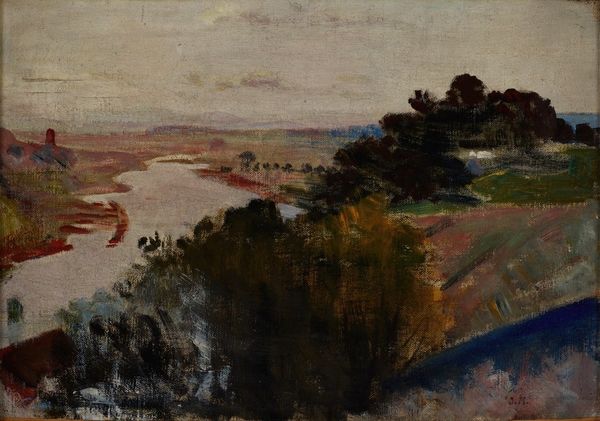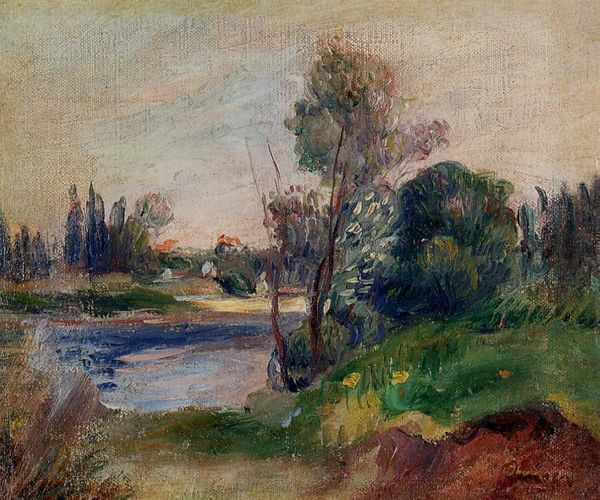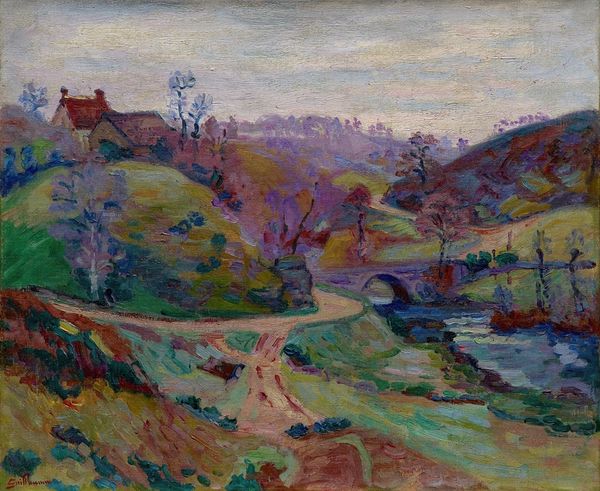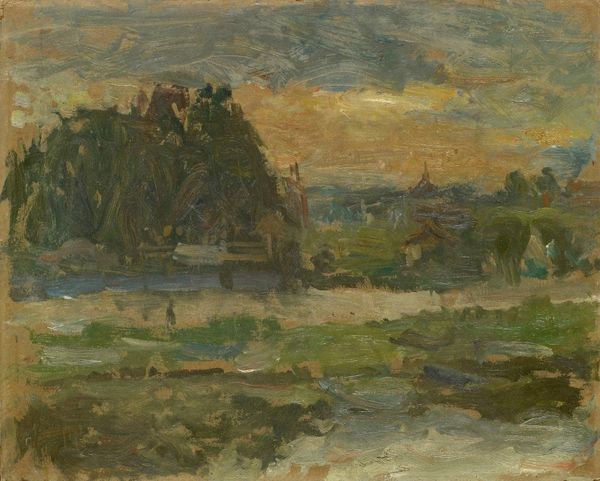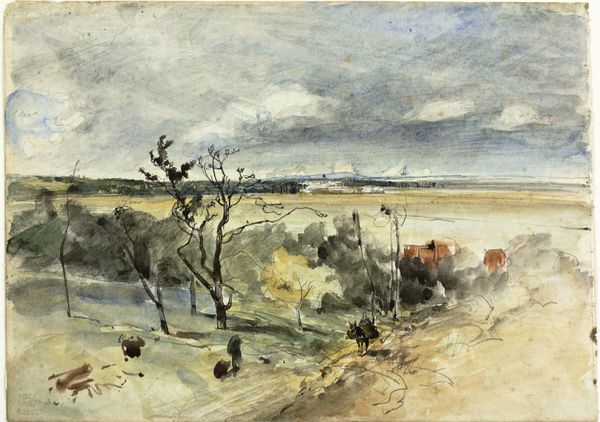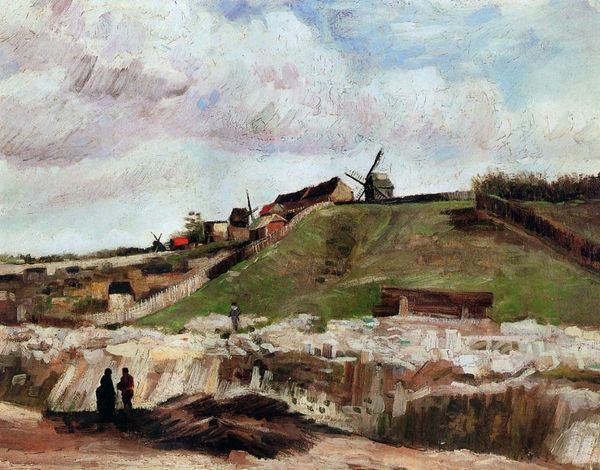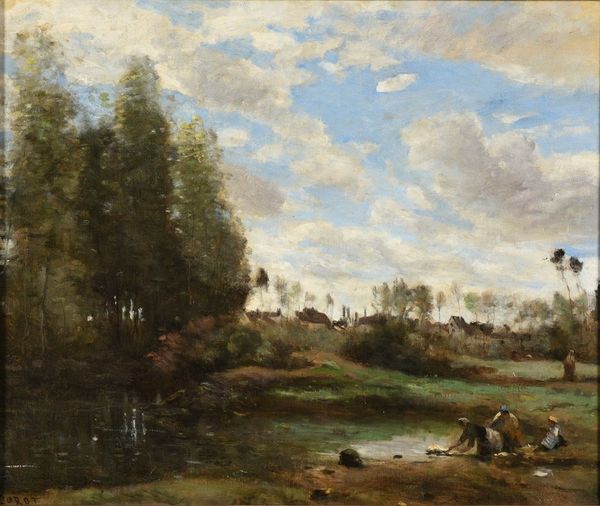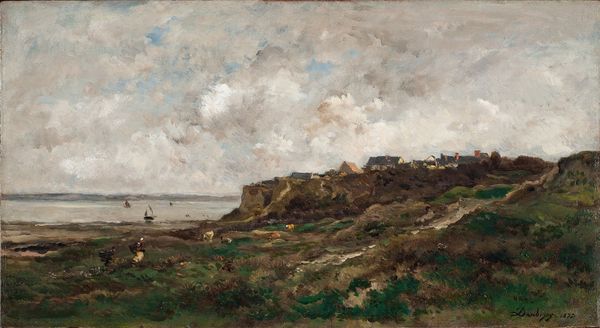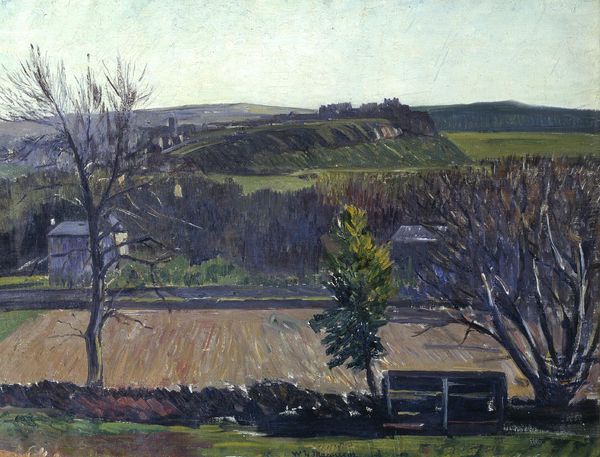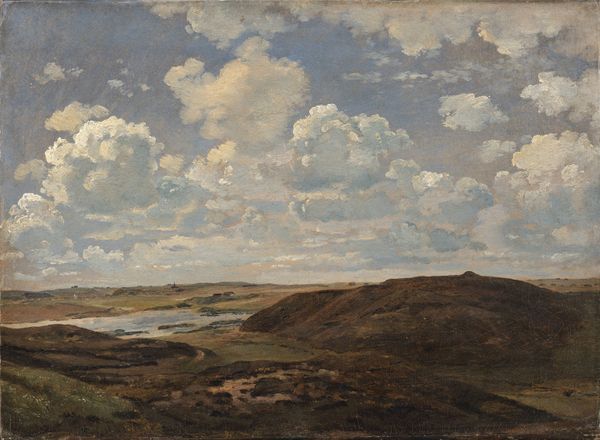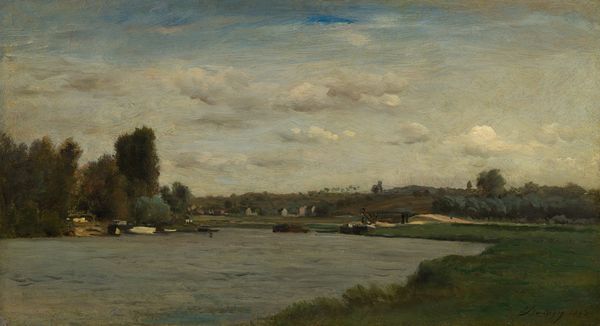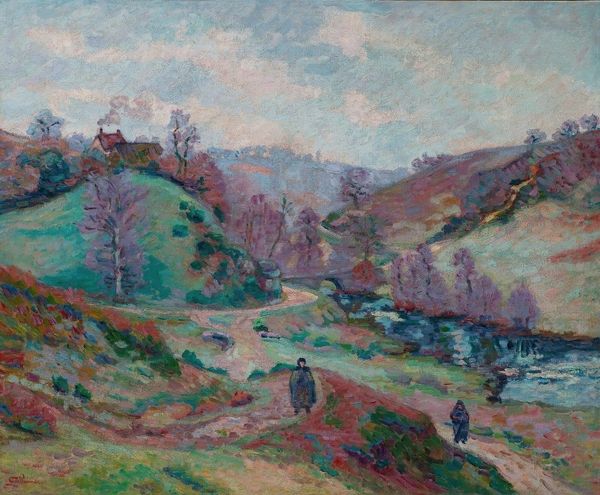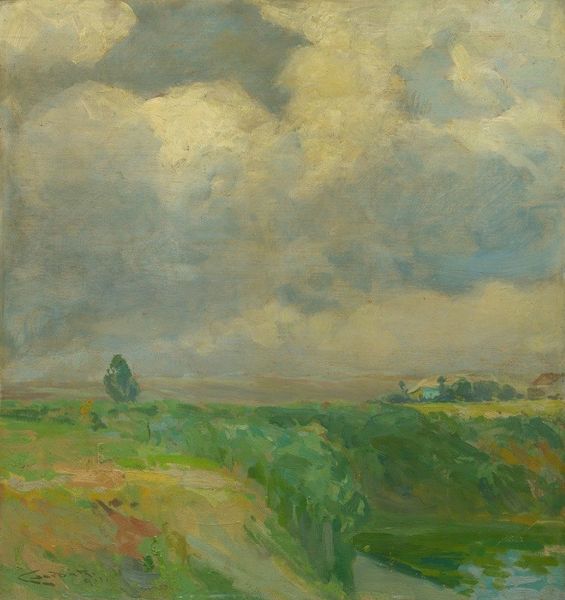
painting, oil-paint
#
painting
#
oil-paint
#
landscape
#
oil painting
#
romanticism
#
cityscape
Copyright: Public Domain: Artvee
Editor: Here we have Johan Christian Dahl’s “View of Meissen. Study,” an oil painting from 1828. I find it kind of melancholic. The cloudy sky really sets the mood, and there’s a lot going on in the composition. What captures your attention? Curator: The image clearly romanticizes Meissen. Look at how Dahl positions the viewer—almost like an outsider looking in, subtly critiquing the rise of industrialization. Do you see the small figures? The smoke? It hints at the changing socio-economic landscape and Dahl's complex view of progress. Editor: I see them, near the river. It is almost as if we are viewing the past and present together. I also notice a tension between the open landscape and the walled city of Meissen in the background. Was he making a political comment on urban versus rural life? Curator: Exactly. Remember that during this period, cities were perceived as centers of power but also social unrest. Dahl may be commenting on the anxieties of that era, contrasting nature with the controlling forces of the walled city and the new world growing within it. Consider, too, who might have purchased a view like this—likely members of the burgeoning middle class wanting a reminder of their roots even as they participated in industrial society. Editor: So, this landscape isn’t just about the aesthetics; it’s a commentary on society and the changing roles within it. It feels more thought-provoking than just picturesque now. Curator: Precisely! Art rarely exists in a vacuum. Understanding its historical and cultural context allows us to truly decipher its meaning. Editor: This was truly enriching; thank you. Now I'll look at art in a completely different way! Curator: You are very welcome. Always remember that understanding the background helps sharpen the foreground.
Comments
No comments
Be the first to comment and join the conversation on the ultimate creative platform.
